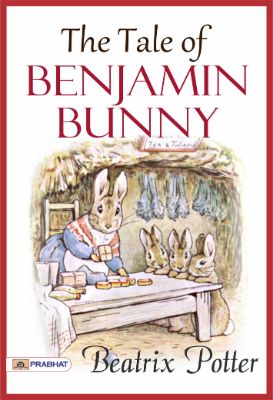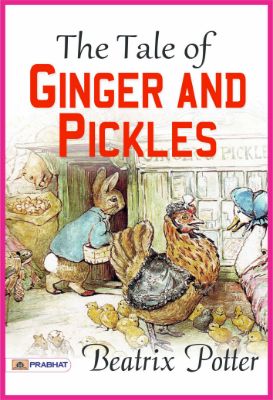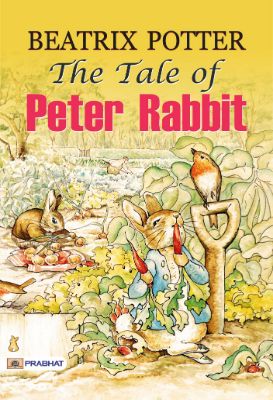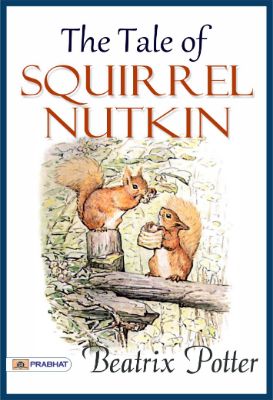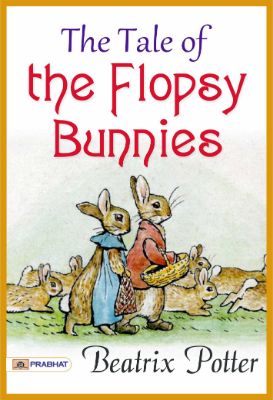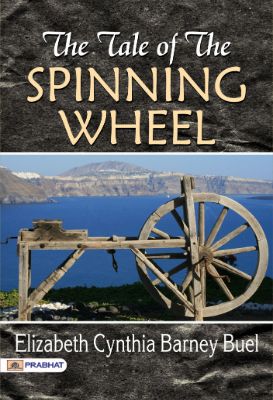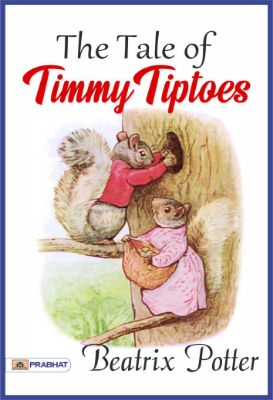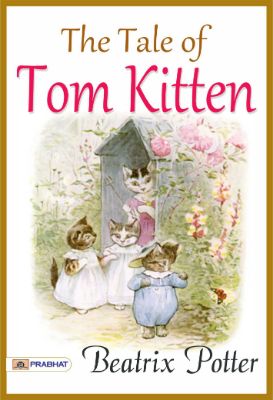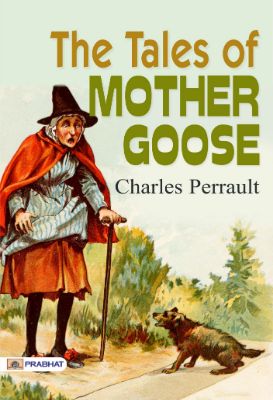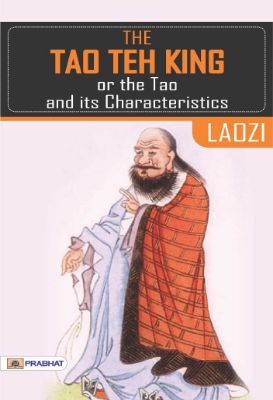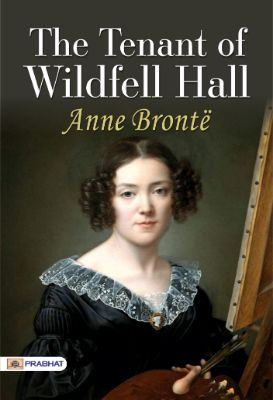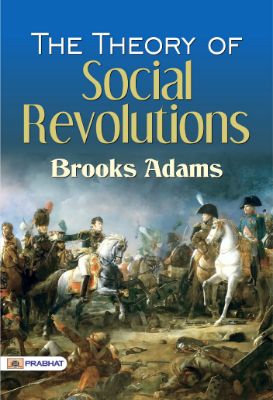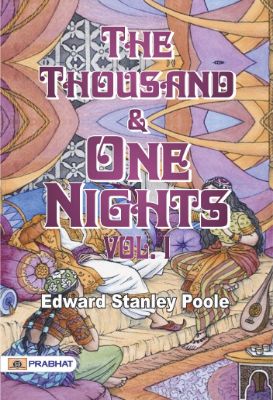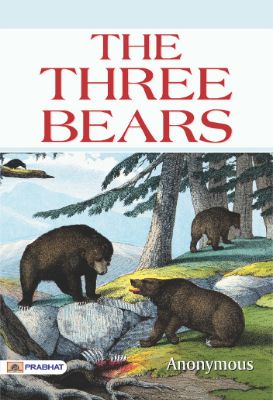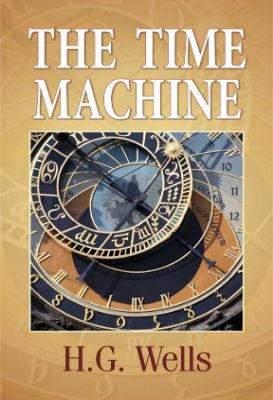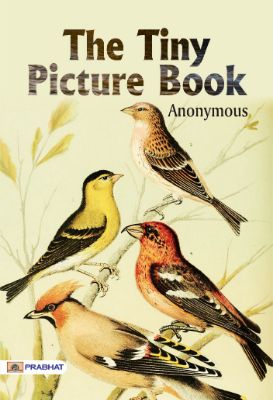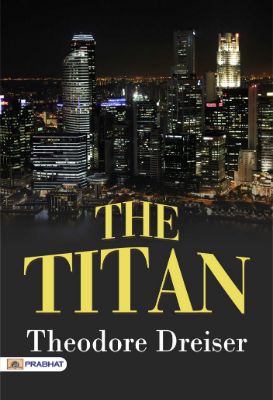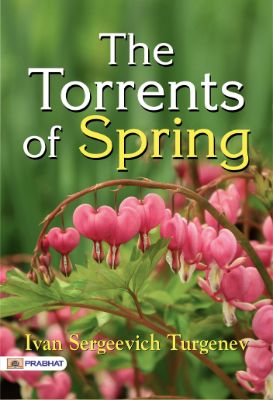Premium Books
Showing 3301–3350 of 3787 results
The Tale of a Tub and The History of Martin by Jonathan Swift
Jonathan Swift’s first major work, ‘A Tale of a Tub’ was arguably his most difficult satire and perhaps his most masterly. The tale is a prose parody divided into sections each delving into the morals and ethics of English. It was first published in the year 1704.
The Tale of Benjamin Bunny by Beatrix Potter
One morning a little rabbit sat on a bank.
He pricked his ears and listened to the trit-trot, trit-trot of a pony.
A gig was coming along the road; it was driven by Mr. McGregor, and beside him sat Mrs. McGregor in her best bonnet.
The Tale of Ginger and Pickles by Beatrix Potter
Once upon a time there was a village shop. The name over the window was “Ginger and Pickles.”
It was a little small shop just the right size for Dolls—Lucinda and Jane Doll-cook always bought their groceries at Ginger and Pickles.
The counter inside was a convenient height for rabbits. Ginger and Pickles sold red spotty pocket-handkerchiefs at a penny three farthings.
They also sold sugar, and snuff and galoshes.
The Tale of Jemima Puddle-Duck by Beatrix Potter
Her sister-in-law, Mrs. Rebeccah Puddle-duck, was perfectly willing to leave the hatching to some one else—”I have not the patience to sit on a nest for twenty-eight days; and no more have you, Jemima. You would let them go cold; you know you would!”
The Tale of Johnny Town-Mouse by Beatrix Potter
Johnny Town-mouse was born in a cupboard. Timmy Willie was born in a garden. Timmy Willie was a little country mouse who went to town by mistake in a hamper. The gardener sent vegetables to town once a week by carrier; he packed them in a big hamper.
The Tale of Mr. Jeremy Fisher by Beatrix Potter
Once upon a time there was a frog called Mr. Jeremy Fisher; he lived in a little damp house amongst the buttercups at the edge of a pond.
The water was all slippy-sloppy in the larder and in the back passage.
But Mr. Jeremy liked getting his feet wet; nobody ever scolded him, and he never caught a cold!
The Tale of Mr. Tod by Beatrix Potter
I have made many books about well-behaved people. Now, for a change, I am going to make a story about two disagreeable people, called Tommy Brock and Mr. Tod.
The Tale of Mrs Tittlemouse by Beatrix Potter
The Tale of Mrs. Tittlemouse is a children’s book written and illustrated by Beatrix Potter, and published by Frederick Warne & Co. in 1910. The tale is about housekeeping and insect pests in the home, and reflects Potter’s own sense of tidiness and her abhorrence of insect infestations.
The Tale of Mrs. Tiggy-Winkle by Beatrix Potter
NCE upon a time there was a little girl called Lucie, who lived at a farm called Little-town. She was a good little girl—only she was always losing her pocket- handkerchiefs!
One day little Lucie came into the farm-yard crying— oh, she did cry so! “I’ve lost my pocket-handkin! Three handkins and a pinny! Have you seen them, Tabby Kitten?”
THE Kitten went on washing her white paws; so Lucie asked a speckled hen—
“Sally Henny-penny, have you found three pocket-handkins?”
But the speckled hen ran into a barn, clucking—
“I go barefoot, barefoot, barefoot!”
The Tale of Peter Rabbit by Beatrix Potter
The Tale of Peter Rabbit’ is a children’s book written and illustrated by Beatrix Potter. This book is about mischievous and disobedient young Peter Rabbit. It proceeds as he is chased about the garden of Mr. McGregor. He escapes and returns home to his mother, who puts him to bed after dosing him with camomile tea. The tale was written for five-year-old Noel Moore, son of Potter’s former governess Annie Carter Moore, in 1893.
The Tale of Samuel Whiskers by Beatrix Potter
The Tale of Samuel Whiskers or The Roly-Poly Pudding is a children’s book written and illustrated by Beatrix Potter and first published by Frederick Warne & Co. in October 1908 as The Roly-Poly Pudding. In 1926, it was re-published as The Tale of Samuel Whiskers.
The Tale of Squirrel Nutkin by Beatrix Potter
They also took with them an offering of three fat mice as a present for Old Brown, and put them down upon his door-step.
Then Twinkleberry and the other little squirrels each made a low bow, and said politely—
“Old Mr. Brown, will you favour us with permission to gather nuts upon your island?”
The Tale of the Flopsy Bunnies by Beatrix Potter
It is said that the effect of eating too much lettuce is “soporific.”
I have never felt sleepy after eating lettuces; but then I am not a rabbit.
They certainly had a very soporific effect upon the Flopsy Bunnies!
The Tale of the Pie and the Patty Pan by Beatrix Potter
The Tale of the Pie and the Patty-Pan is a children’s book written and illustrated by Beatrix Potter, and published by Frederick Warne & Co. in October 1905. It tells of a cat called Ribby and a tea party she holds for a dog called Duchess.
The Tale of the Spinning Wheel by Elizabeth Cynthia Barney Buel
The spinning-wheel—symbol of the dignity of woman’s labor.—What wealth of memory gathers around the homely implement, homely indeed in the good old sense of the word—because belonging to the home. Home-made and home-spun are honorable epithets, replete with significance, for in them we find the epitome of the lives and labors of our foremothers. The plough and the axe are not more symbolic of the winning of this country from the wilderness, nor the musket of the winning of its freedom, than is the spinning-wheel in woman’s hands the symbol of both.
The Tale of Timmy Tiptoes by Beatrix Potter
Timmy Tiptoes sat out, enjoying the breeze; he whisked his tail and chuckled—”Little wife Goody, the nuts are ripe; we must lay up a store for winter and spring.” Goody Tiptoes was busy pushing moss under the thatch—”The nest is so snug, we shall be sound asleep all winter.” “Then we shall wake up all the thinner, when there is nothing to eat in spring-time,” replied prudent Timothy.
The Tale of Tom Kitten by Beatrix Potter
Once upon a time there were three little kittens, and their names were Mittens, Tom Kitten, and Moppet.
They had dear little fur coats of their own; and they tumbled about the doorstep and played in the dust.
But one day their mother—Mrs. Tabitha Twitchit—expected friends to tea; so she fetched the kittens indoors, to wash and dress them, before the fine company arrived.
The Tale of Two Bad Mice by Beatrix Potter
As the fish would not come off the plate, they put it into the red-hot crinkly paper fire in the kitchen; but it would not burn either.
The Tales of Mother Goose by Charles Perrault
What virtues do these stories possess that have kept them alive for so long a time? They have to some degree stimulated and nourished qualities of supreme worth in individual and social life. With the young the struggle against greed and falsehood and pride and cowardice is a very real one, and situations in which these homely, fundamental traits are involved are full of interest and seriousness. Again, to mature people the reward of well-doing and the punishment of evil conduct portrayed in these stories are apt to seem too realistic, too much also on the cut-and-dried pattern; but it is far different with children. They have a very concrete sense of right and wrong, and they demand a clear, explicit, tangible outcome for every sort of action. They must have concrete, living examples, with the appropriate outcome of each, set before them.
The Talisman by Walter Scott
The Talisman is one of the Waverley novels by Sir Walter Scott. Published in 1825 as the second of his Tales of the Crusaders, the first being The Betrothed, it is set during the Third Crusade and centres on the relationship between Richard I of England and Saladin.
The Talking Deaf Man by Johann Conrad Amman
ow important a Benefit is this? How advantageous is the not hearing supplied by this Art? If Envy, or the detestable greedy Desire of Gain_ could have prevailed with me, I had retained this Art, as lockt up in my own Breast. But alass! How miserable is the condition of the Deaf? How lame and defective is that Speach, which is performed by Signs and Gestures? How little are they capable to receive of those things which concern their eternal Salvation? Who doth not commiserate this sort of Persons? Who can refuse to help them by all means which are possible? For my part, I, by the help of God’s Grace, will not only help them, but will make publick and vulgar what is best to be done therein, yea, and have done so already, that they can understand others speaking, even with the softest Voice, or rather whispering.
The Taming of the Shrew by William Shakespeare
The Taming of the Shrew is a comedy by William Shakespeare, believed to have been written between 1590 and 1592. The play begins with a framing device, often referred to as the induction, in which a mischievous nobleman tricks a drunken tinker named Christopher Sly into believing he is actually a nobleman himself.
The Tao Teh King, or the Tao and its Characteristics by Laozi
Written by a Chinese sage Laozi, ‘The Tao Teh King, or the Tao and its Characteristics’ is believed to be written in 6th century BC.
The Tariff in Our Times by Ida M. Tarbell
It takes no extended examination of any period in the last fifty years—the term covered by the phrase “Our Times” in the title of this book—to convince an unprejudiced student that as far as the tariff is concerned public opinion has never been fairly embodied in the bills adopted. If the popular understanding of protection as expressed in our elections had been conscientiously followed, there would be to-day no duties on iron and steel products, on cheap cottons and cotton mixtures, and, certainly none on a great variety of raw materials probably including raw wool.
The Tempest by William Shakespeare
The Tempest is a play by William Shakespeare, probably written in 1610–1611, and thought to be one of the last plays that Shakespeare wrote alone.
The Ten Books on Architecture by Vitruvius Pollio
Ten Books on Architecture’ is a treatise on architecture by the Roman architect and military engineer Marcus Vitruvius Pollio. As the only treatise on architecture to survive from antiquity, it has been regarded as the first book on architectural theory as well as a major source on the canon of Classical Architecture, since Renaissance. It contains a variety of information on Greek and Roman buildings, as well as prescriptions for the planning and design of military camps, cities, and structures both large and small.
The Ten Pleasures of Marriage by A. Marsh
It is a curious thing, that fundamental English humour. It can be vividly concentrated into a single word, as when, for instance, the chronicler of The Ten Pleasures of Marriage revives the opprobrious term for a tailor—”pricklouse”: the whole history of the English woollen industry and of the stuffy Tudor and Stuart domestic architecture is in the nickname. Or a single phrase can light up an idea, as when, a few days before marriage, “the Bridegroom is running up and down like a dog.” But, on the other hand, the spirit manifests itself sometimes in exuberance, as when Urquhart and Motteux metagrobolized Rabelais into something almost more tumescent and overwhelming than the original. In that vein of humour the present work frequently runs. The author is as ready to pile up his epithets as Urquhart himself. Let the Nurse go, he says, “for then you’ll have an Eater, a Stroy-good, a Stufgut, a Spoil-all, and Prittle-pratler, less than you had before.”
The Tenant of Wildfell Hall by Brontë, Anne
Phenomenally successful at the time of publication, The Tenant of Wildfell Hall was considered quite controversial at the time due to its focus on issues of feminism and marital abuse. When thereclusive widow Helen Graham and her son take up residence in an old mansion, she becomes the unwilling subject of her neighbours’ scrutiny. As Helen tries to escape her difficult past, complicationsarise when young farmer Gilbert Markham falls in love with her. The novel has been adapted extensively across film, television, radio and theatre.
The Tenth Man by W Somerset Maugham
First published in the year 1913, the present book ‘The Tenth Man’ is a play by British playwright, novelist and short story writer W Somerset Maugham. Play’s protagonist George Winters is a self-made man, a wealthy unscrupulous businessman and M.P. for Middlepool who has married into the impoverished nobility for reasons of status. But when his wife threatens to divorce him in public immediately before a general election, a scandal threatens that could endanger his latest bit of shady dealing.
The Theory of Environment by Armin Hajman Koller
I gratefully acknowledge my indebtedness to Professor Martin Schütze of the University of Chicago for the suggestion, made in 1907, to find out what Herder’s idea of milieu is; to my friend and former colleague at the University of Illinois, Dr. Charles C. Adams (now Assistant Professor of Ecology at Syracuse University) for references given me at my request (but he is in no wise to be held responsible for the bringing in of these references); and to my good friend and colleague, Professor John Driscoll Fitz-Gerald of the University of Illinois for a number of helpful suggestions given when reading the manuscript and for assisting with the reading of the galley proof.
The Theory of Heat Radiation by Max Planck
The profoundly original ideas introduced by Nobel laureate Max Planck in this endeavor to reconcile the electromagnetic theory of radiation with experimental facts have proved to be of the greatest importance. Few modern introductions to the theory of heat radiation can match this work for precision, care, and attention to details of proof.
The Theory of Social Revolutions by Brooks Adams
The first chapter of the following book was published, in substantially its present form, in the Atlantic Monthly for April, 1913. I have to thank the editor for his courtesy in assenting to my wish to reprint. The other chapters have not appeared before. I desire also to express my obligations to my learned friend, Dr. M.M. Bigelow, who, most kindly, at my request, read chapters two and three, which deal with the constitutional law, and gave me the benefit of his most valuable criticism.
Further than this I have but one word to add. I have written in support of no political movement, nor for any ephemeral purpose. I have written only to express a deep conviction which is the result of more than twenty years of study, and reflection upon this subject.
The Theory of Spectra and Atomic Constitution: Three Essays by Niels Bohr
First published in the year 1922, the present book ‘The Theory of Spectra and Atomic Constitution: Three Essays’ by Niels Bohr, professor of theoretical physics at University of Copenhagen at that time, consists of three essays. These essays, which here appear in English, all deal with the application of the quantum theory to problems of atomic structure, and refer to the different stages in the development of this theory.
The Theory of Stock Exchange Speculation by Arthur Crump
Some years ago I came across a book, called “Crump’s Theory of Stock Speculation,” which had gone through several editions in England; and the practical wisdom expressed therein impressed me so forcibly that ever since then I formed the project of publishing an American edition.
The Theory of the Leisure Class by Thorstein Veblen
The institution of a leisure class is found in its best development at the higher stages of the barbarian culture; as, for instance, in feudal Europe or feudal Japan. In such communities the distinction between classes is very rigorously observed; and the feature of most striking economic significance in these class differences is the distinction maintained between the employments proper to the several classes. The upper classes are by custom exempt or excluded from industrial occupations, and are reserved for certain employments to which a degree of honour attaches. Chief among the honourable employments in any feudal community is warfare; and priestly service is commonly second to warfare. If the barbarian community is not notably warlike, the priestly office may take the precedence, with that of the warrior second. But the rule holds with but slight exceptions that, whether warriors or priests, the upper classes are exempt from industrial employments, and this exemption is the economic expression of their superior rank. Brahmin India affords a fair illustration of the industrial exemption of both these classes. In the communities belonging to the higher barbarian culture there is a considerable differentiation of sub-classes within what may be comprehensively called the leisure class; and there is a corresponding differentiation of employments between these sub-classes. The leisure class as a whole comprises the noble and the priestly classes, together with much of their retinue. The occupations of the class are correspondingly diversified; but they have the common economic characteristic of being non-industrial. These non-industrial upper-class occupations may be roughly comprised under government, warfare, religious observances, and sports.
The Third Circle by Frank Norris
Unlike some other reproductions of classic texts we have not used OCR(Optical Character Recognition), as this leads to bad quality books with introduced typos. In books where there are images such as portraits, maps, sketches etc We have endeavoured to keep the quality of these images, so they represent accurately the original artefact. We believe this work is culturally important. We appreciate your understanding and hope you enjoy this valuable book.
The Thirty-Nine Steps by John Buchan
The Thirty-Nine Steps’ is an adventure novel by the Scottish author John Buchan. It was first published as a serial in Blackwood’s Magazine in 1915. It is the first of five novels featuring Richard Hannay, an all-action hero with a stiff upper lip and a miraculous knack for getting himself out of sticky situations.
The Thousand and One Nights, Vol. I. by Ed. Edward Stanley Poole
“The present edition is an exact reproduction of that edited by my father, with my great-uncle’s final corrections, and published by Mr. John Murray in 1859. Several reprints of that edition have testified to the continued popularity of the work, and the necessity for the present issue shows that an acquaintance of nearly half a century has not yet wearied the public of the standard translation of the Thousand and One Nights. The secret of Mr. Lane’s success is to be found partly in the instinctive sympathy for the spirit of the East, which enabled him faithfully to reproduce the characteristic tone of the original, and partly in the rich store of illustrations of oriental life and thought contained in his Notes.” -Introduction
The Three Bears by Anonymous
There were once three bears, who lived in a wood,
Their porridge was thick, and their chairs and beds good.
The biggest bear, Bruin, was surly and rough;
His wife, Mrs. Bruin, was called Mammy Muff.
Their son, Tiny-cub, was like Dame Goose’s lad;
He was not very good, nor yet very bad.
The Three Musketeers by Alexandre Dumas
The Three Musketeers’ is primarily a historical and adventure novel. However, Alexandre Dumas also frequently works into the plot various injustices, abuses and absurdities of the old regime, giving the novel an additional political aspect at a time when the debate in France between republicans and monarchists was still fierce. The story was first serialised from March to July 1844, during the July Monarchy, four years before the French Revolution of 1848 violently established the Second Republic.
The Three Stages of Clarinda Thorbald by William T. Hamilton
In the soft light of an afternoon sun, Clarinda sat in an old chair and read a thesis upon love, and she found set forth in this thesis that without love the world would not go around. Further, without love life would be but dross and hideous calamity. She also found therein that men have died from love, and women have languished in torments when it was unrequited.
Even though she was filled with apprehension as she read, she did not wish to eschew love, but was glad she was suffering from its effects.
She imagined that her own particular love was different from the love anybody had ever been consumed with, and she was glad in her heart she was suffering from its effects. She perceived it affected the glint of her hair, and she even thought it affected the beauty of her smile. She knew it affected her eyes, and gave an added color to her cheeks.
The Time Machine by H. G. (Herbert George) Wells
The Time Machine is a science fiction novel by H. G. Wells, published in 1895. Wells is generally credited with the popularization of the concept of time travel by using a vehicle that allows an operator to travel purposely and selectively forwards or backwards in time. The term “time machine”, coined by Wells, is now almost universally used to refer to such a vehicle.
The Tinguian: Social, Religious, and Economic Life of a Philippine Tribe by Cole
It seems desirable, at the outset, to set forth certain general conclusions regarding the Tinguian and their neighbors. Probably no pagan tribe of the Philippines has received more frequent notice in literature, or has been the subject of more theories regarding its origin, despite the fact that information concerning it has been exceedingly scanty, and careful observations on the language and physical types have been totally lacking.
The Tiny Picture Book by Anonymous
APPLES so round, and bright, and red—
O, how I love to see;
They look so tempting as they hang
Upon the green old tree.
A naughty boy once tried to steal
From off his neighbor’s bough;
But sad to hear, adown he fell,
And is a cripple now.
The Tiny Story Book by Anonymous
I have been to see my little cousin Alice. She is just three years old, and I love her dearly. She has many things to play with. She has a ball, a rattle, and a horse; and she had a nice wax doll given her last Christmas, but as she got the paint off its face by kissing, it is laid by till she is bigger. We played she was my baby, and I dressed her up and took her to walk; after that we played have tea, and then I rocked her to sleep, and she looked so nice I could not help kissing her. She is coming to see me next week.
The Titan by Theodore Dreiser
“When Frank Algernon Cowperwood emerged from the Eastern District Penitentiary in Philadelphia he realized that the old life he had lived in that city since boyhood was ended. His youth was gone, and with it had been lost the great business prospects of his earlier manhood. He must begin again.” -an excerpt
The Torrents of Spring by Ivan Sergeevich Turgenev
Never had he felt such weariness of body and of spirit. He had passed the whole evening in the company of charming ladies and cultivated men; some of the ladies were beautiful, almost all the men were distinguished by intellect or talent; he himself had talked with great success, even with brilliance … and, for all that, never yet had the taedium vitae of which the Romans talked of old, the ‘disgust for life,’ taken hold of him with such irresistible, such suffocating force. Had he been a little younger, he would have cried with misery, weariness, and exasperation: a biting, burning bitterness, like the bitter of wormwood, filled his whole soul. A sort of clinging repugnance, a weight of loathing closed in upon him on all sides like a dark night of autumn; and he did not know how to get free from this darkness, this bitterness. Sleep it was useless to reckon upon; he knew he should not sleep.
The Tower Menagerie by Edward Turner Bennett
Edward Turner Bennett’s ‘The Tower Menagerie’ is a book comprising the natural history of the animals contained in that establishment with anecdotes of their characters and history. This book has illustrated portraits of each animal, taken from life, by William Harvey.
The Toys of Peace and Other Papers by Saki
The present book ‘The Toys of Peace and Other Papers’ consists various stories and artcles written by the famous English author HH Munro who is best known by his pen name Saki. It was first published in the year 1919.
The Tragedie of Anthonie and Cleopatra by William Shakespeare
Antony and Cleopatra is a tragedy by William Shakespeare. The play was performed first circa 1607 at the Blackfriars Theatre or the Globe Theatre by the King’s Men. Its first appearance in print was in the Folio of 1623.



